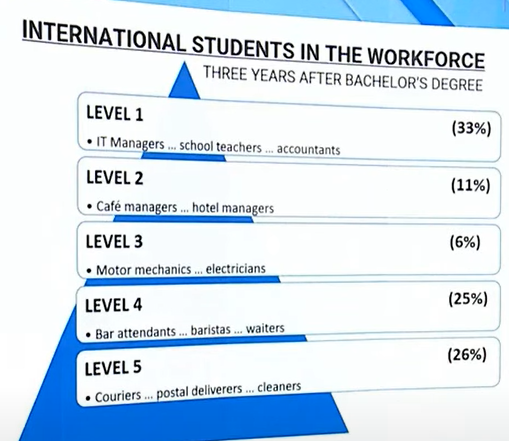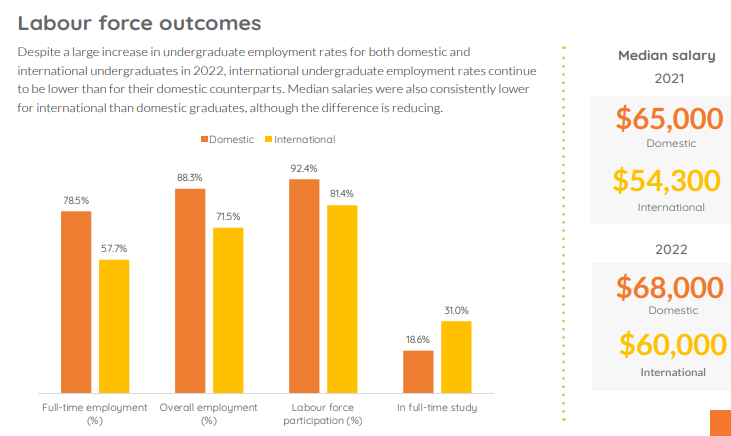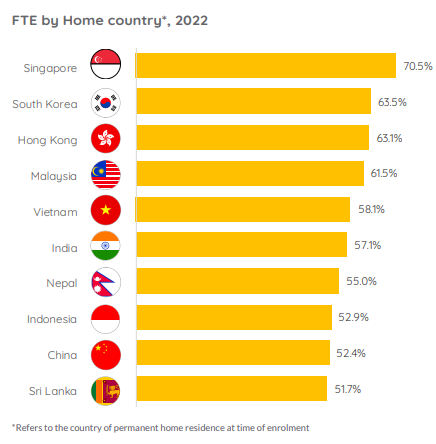Sky News’ Tom Connell undertook an interesting analysis of Australia’s visa system yesterday (h/t Tarric Brooker).
The most disturbing result was the below graphic showing that 51% of international student graduates with a bachelor’s degree still in Australia after three years are working in Level 4 or 5 jobs:

Level 4 jobs include bar staff, waiters, and the like, whereas Level 5 jobs include cleaners, couriers, etc.
It is a sad indictment on Australia’s university sector that it is producing so many international graduates that work in low-skilled and low-paid jobs, and is one of the drivers of Australia’s low productivity.
These findings are supported by the latest Graduate Outcomes Survey (GOS), which shows that international employment rates, participation rates and median salaries are well below those of domestic graduates:

Source: Graduate Outcomes Survey (2022)
Disturbingly, Australia’s three largest source nations for international students – China, India and Nepal – each have poor labour market outcomes as measured by full-time employment:

Source: Graduate Outcomes Survey (2022)
It’s little wonder we have a skills shortage if this is what the tertiary sector is spewing out.
Australia’s international education ponzi scheme has literally delivered a giant low-paid, low-skilled migrant underclass.
It will likely get worse given the Albanese government this year signed two migration agreements with India that, among other things, provides:
- Five-year student visas for Indians, with no caps on the numbers that can study in Australia.
- Indian graduates of Australian tertiary institutions on a student visa can apply to work without visa sponsorship for up to eight years.
- Australia will recognise Indian vocational and university graduates to be “holding the comparable AQF qualification” for the purposes of admission to higher education and general employment.
These migration pacts make Australia an even more attractive destination and will likely increase the flow of lower-skilled Indians seeking work and residency in Australia.
Would you like fries with that?

